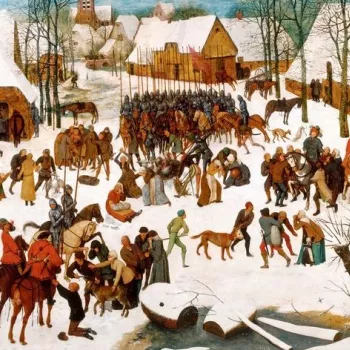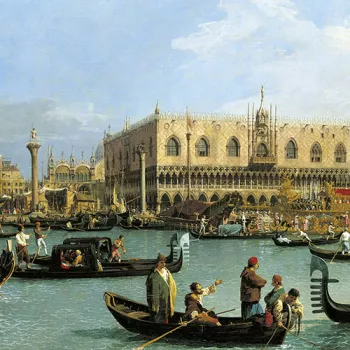A Personification of Winter c. 1726
Pastel on blue paper | 61.6 x 49.5 (support, canvas/panel/stretcher external) | RCIN 400647
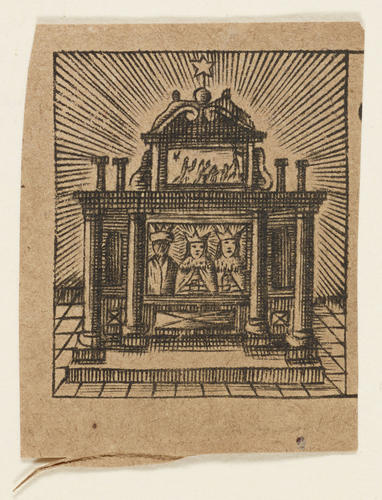
Rosalba Giovanna Carriera (Venice 1673-Venice 1757)
Master: A Personification of Winter Item: Token showing the Three Kings c. 1726
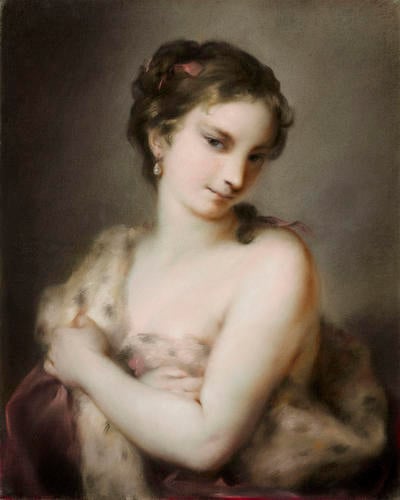

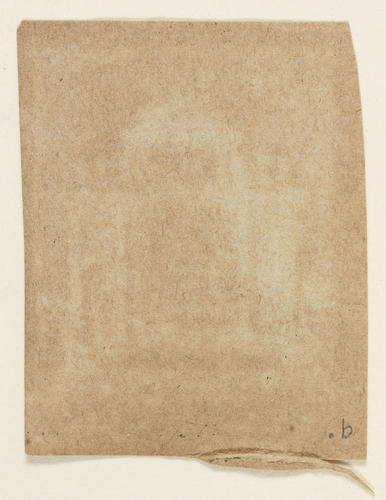
-
A pastel on blue paper of an almost half-length figure of a young girl, facing half to the left, her head lowered and turned half to the right; clasping a fur-trimmed wrap across her naked chest, across which her left arm is extended. At bottom edge, under the frame's fillet, strips of bright fuchsia showing the extent to which some of the pastel pigments have faded over time.
This pastel was one of the most admired works in Joseph Smith's collection; it was described by him in the 'Italian List' of paintings that entered the Royal Collection in the sale of Smith's collection to George III in 1762 as 'a Beautiful Female covering herself with a Pelisse allowed to be the most excellent this Virtuosa ever painted'. On 26 May 1726 Carriera's diaries record a set of allegories of the Four Seasons to be dispatched to London care of 'Sig. Smith', presumably Joseph Smith's brother John who handled his shipments in England. Smith's pastel of Winter was probably made around the same date; an undated letter from Smith to Carriera asks the artist to make two versions and to put the best one aside for him, the other to be sent 'all'amico' (for the letter see B. Sani, Rosalba Carriera, Turin and Milan 1988, no. 511, p. 605). Smith evidently guarded the pastel jealously, as in 1735 Robert Dingley wrote to Carriera directly requesting a pastel of 'a pretty young country girl…in the style of Winter in Mr Smith's collection…there is no need to say anything to Smith about this' (F. Haskell, Patrons and Painters, New Haven and London 1980, p. 303). Carriera made several sets of allegories of the Four Seasons, but a full set was not among the twenty or so owned by Smith: only Winter and probably Summer (RCIN 400648) were part of his collection. In traditional allegories Winter was typically shown as an old man, but Carriera transformed the subject into a beautiful young woman. After the sale of 1762 the pastel was put on display in George III's bedroom at Buckingham House alongside the pastel of Summer.
During conservation in 2017 a small printed token (400647.b) showing the three Kings was discovered between the pastel's canvas liner and wooden strainer. Similar prints have been found on pastels in other collections, including at Dresden (see A. Henning, Atti di convegno.., 2007, pp. 290-291). In a letter to Anton Francesca Marmi in Florence on 3 December 1729, the Venetian nobleman Pier Caterino Zeno described Carriera's 'distinct devotion to the Three Kings, who brought themselves to the adoration of the baby Jesus at the grotto in Bethlehem. Once she gave me a certain portrait to send to my brother in Vienna, and she gave me a little card of the three aforementioned adoring Magi; and said that to these she entrusted the safe outward journey of the portrait; adding, that whenever such little images had accompanied her pictures, they had always arrived safely' (B. Sani, Rosalba Carriera: Lettere, Diari, Frammenti, Florence 1985, pp. 803-5). It has not been possible to identify the printmaker, and such cheap devotional prints or 'santini' were made in their thousands by publishers such as the Remondini in Bassano.
Rosalba Carriera was born in Venice. She began her career as a painter of snuffboxes, but rose quickly to fame for her pastel portraits, which became highly desired across Europe. She spent a brief period in Paris in 1720 where she was met with great acclaim, returning to Venice where Smith acted as a friend and agent. He also had the finest collection of her pastels in the city, only five of which can be identified in the Royal Collection. The largest group of pastels by Carriera belonged to Frederick Augustus Elector of Saxony, to whom she was introduced by the Venetian collector Francesco Algarotti. Over 100 of her pastels were on display at his residence in Dresden in a 'Rosalba Room'. The artist became blind in later life and died in 1757.Provenance
Acquired in 1762 by George III from Joseph Smith, British Consul in Venice (Italian List no 23); recorded in the Bedchamber at Buckingham Palace in 1790
-
Medium and techniques
Pastel on blue paper
Measurements
61.6 x 49.5 (support, canvas/panel/stretcher external)
86.1 x 74.5 x 7.8 cm (frame) (frame, external)
Category
Object type(s)
Other number(s)
Alternative title(s)
Winter




